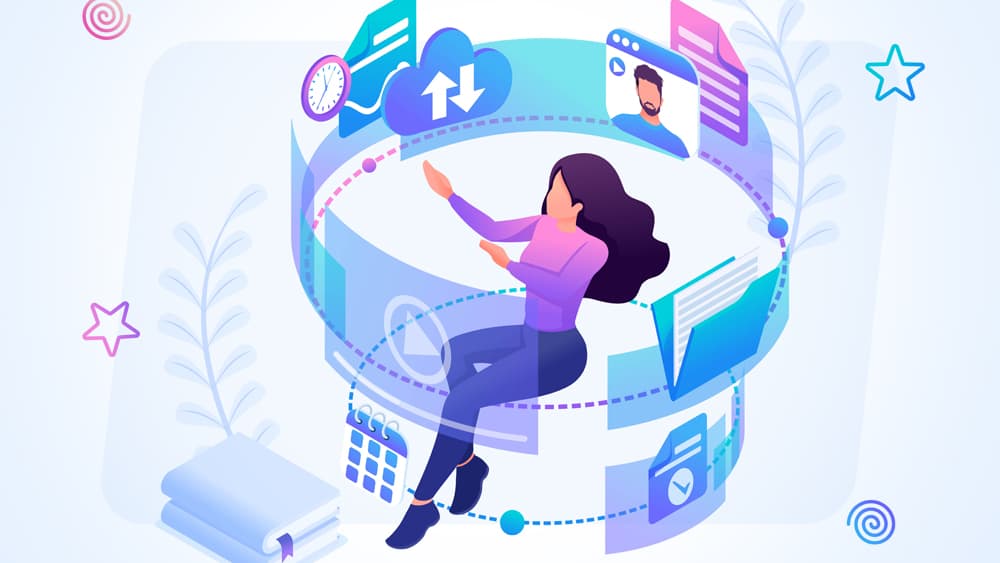Learning is the process of acquiring new understanding, knowledge, behaviors, skills, values, attitudes, and preferences. There are many ways to learn but what works best? And why does it matter? In this article, Inchainge discusses everything you need to know about learning.
What is Learning?
Learning can be defined as the acquisition of abstract concepts that can be applied in real life situations.
Retention of learning is a major topic, depending on the learning format used. What is learning retention? It’s the process of transferring information from our short term to our long-term memory. In other words, it’s all about making new knowledge stick.
Within Inchainge we are focusing on the formats in the lower part of the learning pyramid to optimize retention. The experience and discussion part in the learning process are very important to increase retention. More in-depth information can be found on our experiential learning page.
What are the different learning styles?
Other important dimensions of learning formats are:
- Offline versus online learning
- Continuous learning versus one off training
- Synchronous learning versus asynchronous learning
- Individual learning versus team learning
- Single loop learning versus double loop learning
Offline versus online learning
At Inchainge we believe flexibility in switching between learning formats is essential. Having our learning portal, learning material and simulation in the cloud creates an environment where everything is possible. Even switching from offline to online at the last moment, or the other way around is an option. Or maybe a hybrid format, using the strong points of both formats in a balanced way. It is up to you!
Continuous learning versus one off training
The more a training is in a spoon feeding continuous format, the higher the retention of learning. Continuous formats are very well supported by online and hybrid training formats.
Continuous learning is the process of learning new skills and knowledge on an on-going basis and it comes in many forms. It can range anywhere from taking formal courses to casual social learning.
The concept of continuous learning clashes with the traditional model of one-off training programs: Employee gets a new job. He/she takes a short but intense instructor-led class. Time passes by without the employee ever receiving any follow-up training.
Continuous learning in the workplace is a non-stop process for as long as the person remains in the company. Modern employees are tech-savvy, plugged-in and on-the-go; the vast majority expects more interactive learning experiences accessible anywhere and at any time.
Synchronous learning versus asynchronous learning
Synchronous learning means participants all learn in the same pace. This creates more on the spot interaction between participants and the trainer. Synchronous learning is powerful when having discussions. In this case the training is mostly paced by the instructor.
Asynchronous learning is often self paced learning which gives flexibility to the participant. Learning can be done when it fits in his/her schedule and energy level.
At Inchainge we believe in blending synchronous and asynchronous learning in a powerful mix.
Individual learning versus team learning
Learning in teams has a big advantage. You learn from each other meaning you learn extra skills you don’t learn individually. Think about listening, arguing, convincing, decision making, and team building. This is impossible to learn from a book on your own. Therefore, team based learning is a very rich format of learning. Within our learning simulations we try to maximize this format.
Single loop learning versus double loop learning
At Inchainge we believe in the value of double loop learning. Just solving the problem, also referred to as single-loop learning, is not enough. Understanding the system and the assumptions helps to understand why we do what we do. This comes back to the essence of learning: ‘the acquisition of abstract concepts that can be applied in real life situations’.
Sources
- Our Partner Content: "Education and Training" Article by By Mike Loughrin, CEO for Transformance Advisors
https://transformance.biz/portfolio/education-training
You might want to learn more about

Blended learning
With technological advancements and changing circumstances, the need for alternatives to traditional face-to-face education is rising. Blended learning combines hard and soft, online and offline, and individual and group learning– the options hereby are endless! Inchainge’s business simulations lend themselves to many forms of blended learning, find out which one suits you best!

Business games
A high-performing value chain needs the collaboration of team members from across the organization. Tearing down silos and creating the right cross-functional mindset, however, can be a serious challenge. So, what do you need in order to achieve success? Ideally, you’d like your team to experiment with different scenarios wherein they learn to overcome various obstacles.
Dive into our
knowledge base
Alignment
Blended learning
Experiential learning
Learning
Supply chain
Sustainability
- Sustainability
- Carbon footprint
- Circular Economy
- Does Green Governance drive the ride to a sustainable future?
- Everything You Need To Know About Eco-Efficiency
- Greenwashing: Everything you need to know
- Is it possible to measure the Triple Bottom Line?
- Sustainability v/s Circularity
- The 3Ps Series: People
- The 3Ps Series: Planet
- The 3Ps Series: Prosperity
- The Butterfly Diagram
- The Value Hill
- What are the 3Ps of Sustainability?
- What do we know about the Triple Bottom Line?
